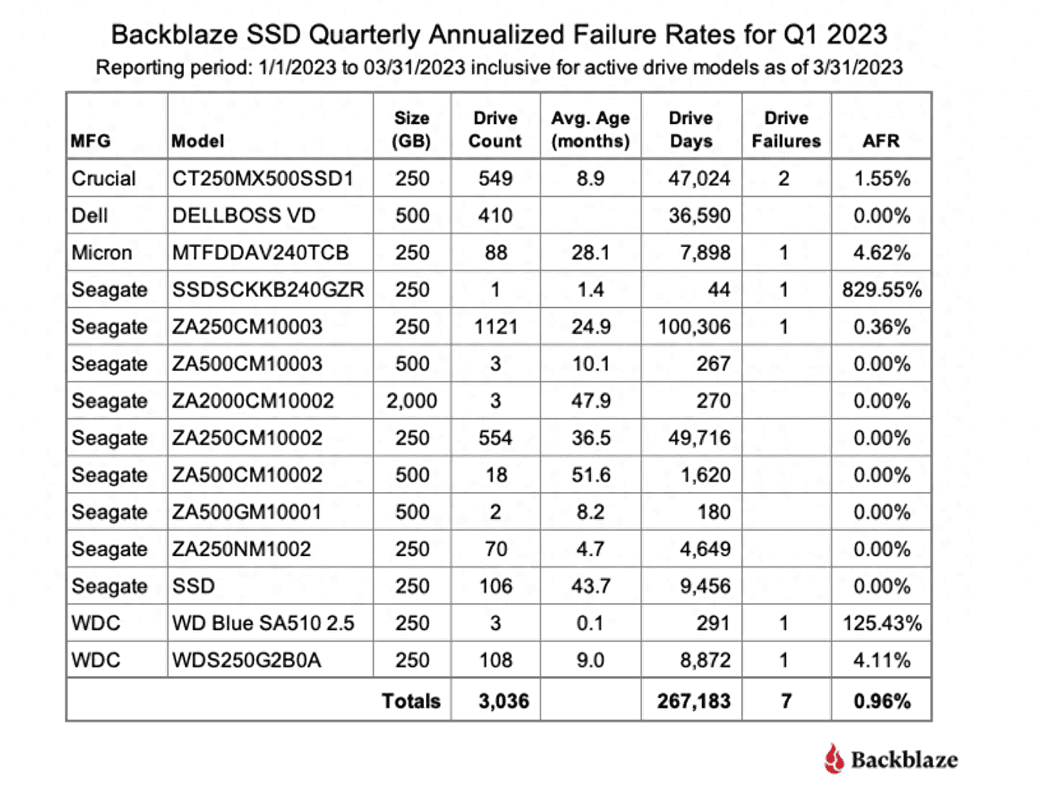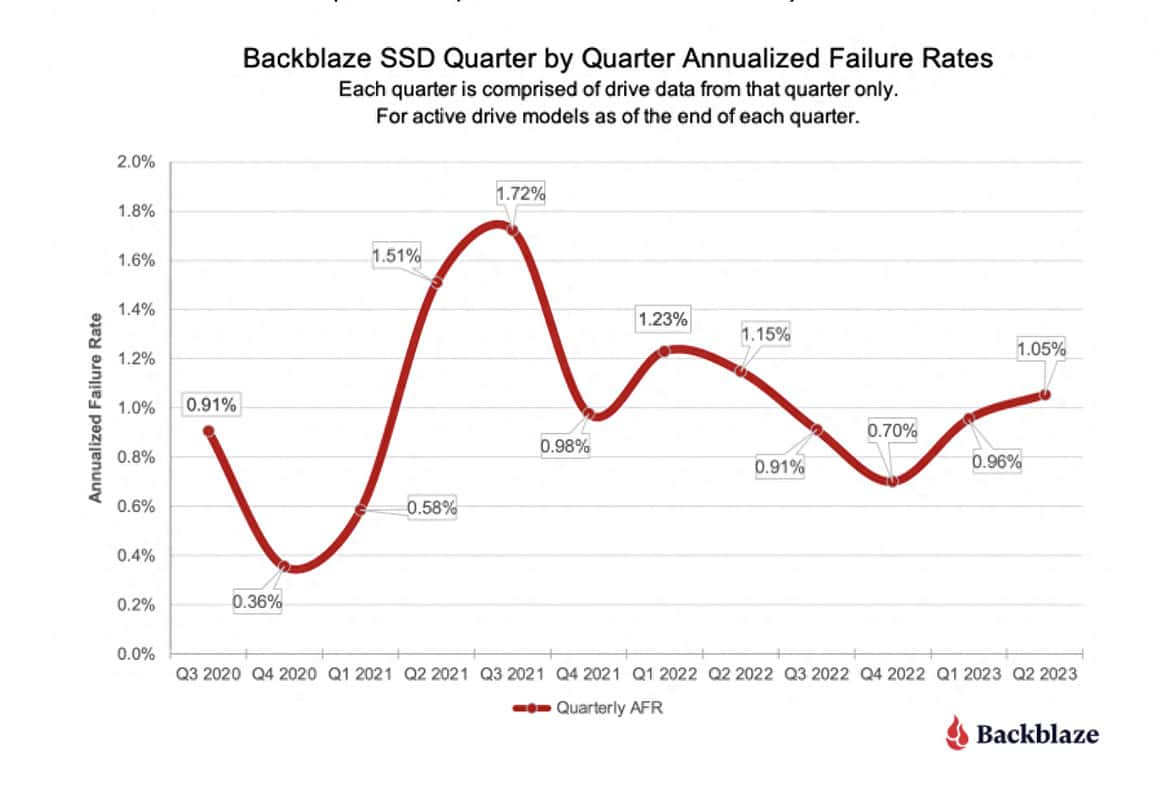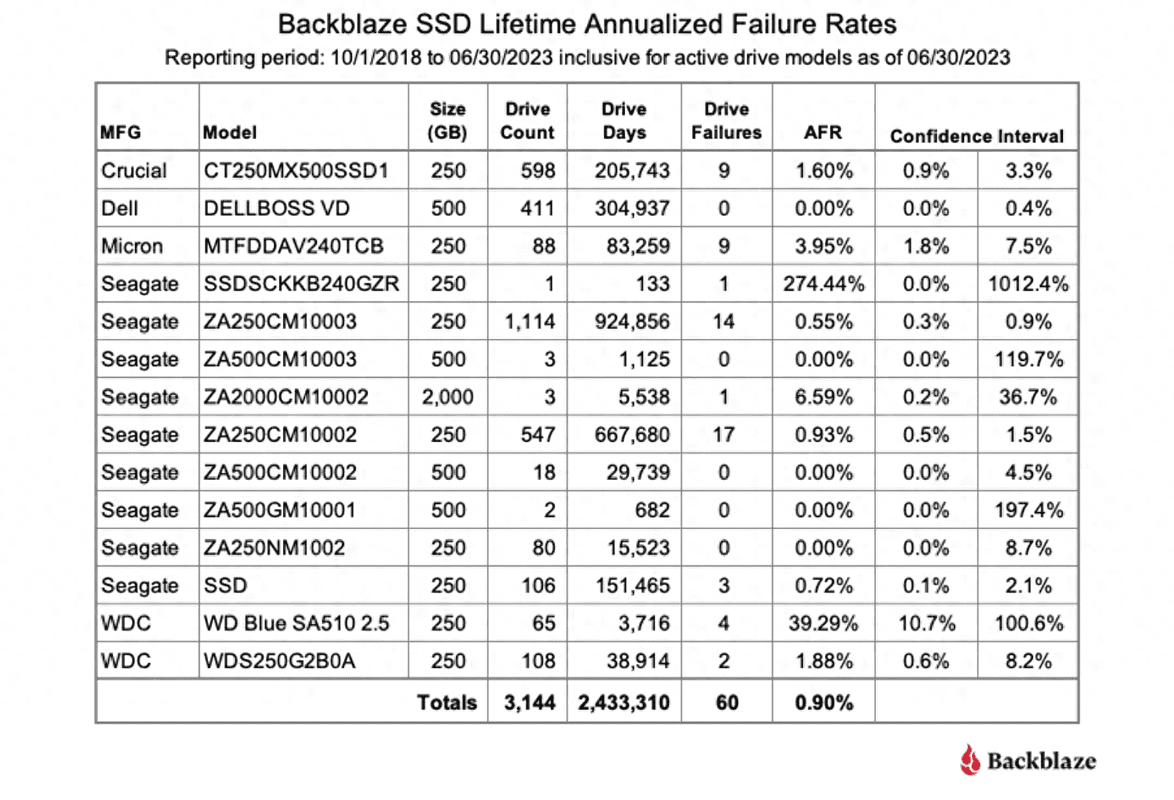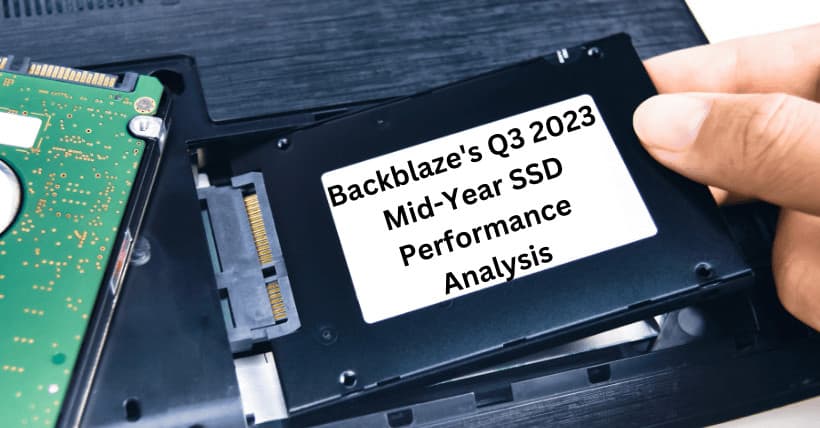Backblaze has released a mid-year report on the reliability of solid-state drives, discussing failure rates and average lifespan. Before delving into the statistics, you might wonder about the reason behind Backblaze merging “quarterly data” each time. The motivation is clear: compared to other hardware components, the lifespan of storage solutions like solid-state drives and hard drives is longer.
Backblaze tested a range of storage devices to help consumers understand their average operating times and provide failure rate information. This helps both ordinary users and companies relying on massive data storage choose the most suitable supplier.

Looking back, Backblaze has confirmed the fact that their “assessment data” has increased significantly compared to the previous year. This is because the company now has 3,144 solid-state drives in its servers, which is nearly a 20% increase from 2022. A larger dataset undoubtedly means that the results obtained will be more reliable, but it may also contain some ambiguities. Backblaze has revealed that the new solid-state drives come from Crucial, WDC, and Seagate.

AFR (Annualized Failure Rate) refers to whether a solid-state drive stops working during a specific year-over-year time frame. Backblaze’s statistics show that the AFR for Seagate model SSDSCKKB240GZR solid-state drives reached 830%. However, this data applies only to two drives from the first to the second quarter. While the reasons behind this have not been disclosed, it may be related to the production of solid-state drives, as Seagate itself is a rather reliable storage solutions company. Additionally, the quarterly AFR increase is minimal, at only 1.05%.

Regarding the Average Failure Rate (AFR) for solid-state drives, Backblaze determines this figure by analyzing the “Power-On Hours or POH” of the drives that failed during the current quarter. The company reiterates that the operational time of solid-state drives is directly proportional to their average age, which is why the average operating duration for their solid-state drive “cohorts” reaches 25 months, and this number increases over time. The Life AFR is also a critical factor categorized as a “real-world test” for the drives. In this case, Backblaze observes a slight quarterly increase of 0.9%.

The data provided by the company is very intriguing, and we appreciate their efforts in compiling real-world data. This is undoubtedly helpful for company customers in choosing their respective storage solutions.
Related

Disclaimer: This article is created by the original author. The content of the article represents their personal opinions. Our reposting is for sharing and discussion purposes only and does not imply our endorsement or agreement. If you have any objections, please contact us through the provided channels.



